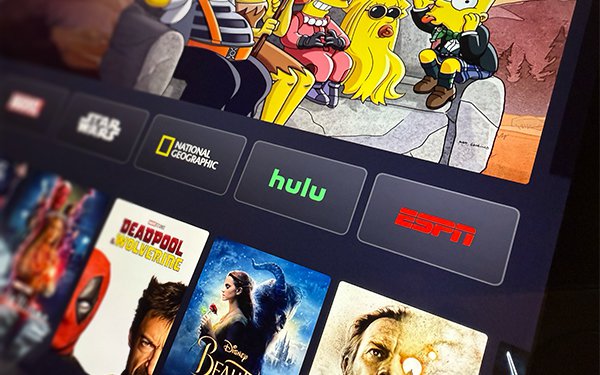
Strong direct-to-consumer (D2C) decisions in a household are
increasingly focusing on just one core, mothership streaming platform.
This decision could largely hinge on one household member who has, in effect, veto power. This could be someone who
objects to a consensus decision by other household members who would remove a specific streaming platform.
This more narrow streaming consumer thinking comes from Walt Disney's relatively new
CFO Hugh Johnston.
“What you really need in the household is one
objector [emphasis added] -- somebody to say, ‘No, no, we can’t turn it off'," he said at a recent industry event.
And that is why Disney decided some
months ago to broaden its programming on Disney+ -- adding a Hulu "tile" to its streaming navigation screen. It is now doing the same with ESPN+.
advertisement
advertisement
Much of this has to do with long held beliefs
around traditional pay TV packages -- cable, satellites or telco -- when it comes down to what actual networks a TV viewer consumes. Perhaps one member of a household just watches, at best, three or
five TV networks out of around 300 that are available to them.
In the pre-streaming days, a package of TV networks meant you still had to spend $90 or $100 a month just to have that kind of
access. (More determined cost-conscious consumers maybe went the iffy digital antenna route, which had basic NBC, CBS, ABC, or Fox TV station affiliates and/or some selected cable TV or other TV
signals.)
All along -- since its streaming business started -- Disney+'s idea was to offer up a pseudo-cable TV package: The Disney Bundle. This would feature new Disney-branded programming
(kids or fantasy-themed, adventure movies/TV shows), new and classic-looking TV dramas or comedies (Hulu), and a selection of live sports or other sports programs (ESPN).
Originally, these
came as separate platforms. But given the growing complexities of the streaming world, Disney -- and increasingly -- other legacy media companies believe consumers need an easier path.
Disney’s efforts may not replace everything a TV viewer is seeking in their previous pre-streaming TV viewing behavior. But that probably isn’t its goal.
The aim is to make any
of its direct-to-consumer businesses as sticky as possible.
This is all intended to keep churn way down and to shift the decision making over which streaming service is to be cut back in
a particular month away from Disney.
Some new Disney magic?